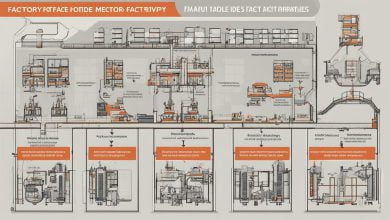
As more organizations adopt DevOps practices, the need for managing infrastructure resources efficiently and securely has become increasingly crucial. Infrastructure as Code (IaC) is an approach that helps DevOps teams to automate the provisioning, configuration, and management of infrastructure resources using code. In a Secure DevOps Environment, IaC plays a critical role in ensuring the security and reliability of cloud infrastructure.
With IaC, infrastructure resources can be treated as code, enabling teams to write scripts that automate tasks such as deploying servers, configuring software, and setting up networks. This approach helps to reduce manual errors, increases efficiency, and improves the overall quality of infrastructure management.
In this article, we’ll explore the tools and tips for mastering IaC in a Secure DevOps Environment. From infrastructure provisioning to deployment automation, we’ll cover the essential tools and best practices for implementing IaC in your organization.
Key Takeaways:
- Infrastructure as Code (IaC) enables the automation of infrastructure provisioning, configuration, and management through code.
- IaC is essential in a Secure DevOps Environment to ensure the security and reliability of cloud infrastructure.
- In this article, we’ll cover the essential tools and best practices for mastering IaC in a Secure DevOps Environment.
Understanding Infrastructure as Code (IaC) and Secure DevOps
Infrastructure as Code (IaC) is a process that involves managing infrastructure resources through code. This means that instead of manually configuring infrastructure settings, teams can use code to quickly and reliably provision, configure, and manage infrastructure resources.
IaC plays a critical role in a Secure DevOps Environment. DevOps emphasizes collaboration and integration between development and operations teams to speed up software delivery and improve product quality. In this environment, IaC enables developers to create, test, and deploy infrastructure code efficiently, while operations teams can manage infrastructure resources more effectively.
Secure DevOps is a set of principles and practices that help ensure that security is a top priority throughout the software development and deployment life cycle. The goal of Secure DevOps is to integrate security into every phase of the development and deployment process to ensure that software systems are reliable, secure, and scalable.
By using IaC in a Secure DevOps Environment, teams can benefit from increased automation, reliability, and security. This approach allows teams to quickly and easily manage infrastructure resources while minimizing the risk of human error or security vulnerabilities.
Tools for Infrastructure Provisioning and Deployment Automation
In a Secure DevOps Environment, automation is key for managing infrastructure resources efficiently. This section will introduce some of the powerful tools available for DevOps automation, including infrastructure provisioning and deployment.
Terraform
Terraform is a popular Infrastructure as Code tool that allows you to manage infrastructure resources across various cloud providers and services. With Terraform, you can define and provision infrastructure resources using a single, declarative language. This means you can automate the deployment of infrastructure and reduce manual intervention, leading to faster and more reliable software delivery.
CloudFormation
CloudFormation is another Infrastructure as Code tool that allows you to describe and manage your infrastructure resources in a template file. It supports a wide range of AWS services, and you can use it to manage your infrastructure deployments with ease. With CloudFormation, you can automate the creation, update, and deletion of resources, and ensure that your infrastructure is in the desired state at all times.
Ansible
Ansible is an open-source automation platform that enables you to automate the provisioning and configuration of infrastructure resources. It uses a simple and human-readable language, making it easy to learn and use. Ansible also supports a wide range of platforms, including cloud providers, operating systems, and network devices. With Ansible, you can automate many routine tasks, including software installation, configuration management, and application deployment.
Best Practices for Infrastructure Automation
Here are some best practices for implementing infrastructure automation:
- Use version control for your infrastructure code
- Define infrastructure as code to ensure consistency and repeatability
- Test your infrastructure code in a development environment before deployment
- Implement security and compliance controls in your automation process
- Continuously monitor and improve your infrastructure automation
By implementing these best practices, you can ensure that your infrastructure automation is robust, secure, and scalable.
Managing Infrastructure with GitOps and Infrastructure Management Tools
In a Secure DevOps Environment, managing infrastructure through code is crucial. One way to achieve this is by using GitOps, a methodology that enables the use of Git repositories to manage infrastructure code. With GitOps, developers can track changes to infrastructure code, manage version control, and maintain infrastructure configuration as code.
In addition to GitOps, infrastructure management tools like Kubernetes, Docker, and Jenkins are also essential for managing and orchestrating infrastructure resources. Kubernetes provides container orchestration, while Docker simplifies the deployment of applications across different environments. Jenkins enables continuous integration and delivery (CI/CD), helping ensure efficient and reliable software delivery.
Together, GitOps and infrastructure management tools can help DevOps teams manage infrastructure resources with greater efficiency and reliability. By maintaining infrastructure configuration as code and using automation tools to manage and orchestrate resources, teams can ensure that infrastructure is always up-to-date, secure, and optimized for performance.
Conclusion
In conclusion, Infrastructure as Code (IaC) is a critical component of a secure DevOps Environment. By using IaC, DevOps teams can provision and manage infrastructure resources through code, ensuring greater automation and reliability. It is essential to remember the principles and practices of Secure DevOps, emphasizing the need for security in the development and operation of software systems.
Tools such as Terraform, CloudFormation, and Ansible are popular options for infrastructure provisioning and deployment automation in a Secure DevOps Environment. Using these tools enhances infrastructure automation and ensures smooth and efficient development and deployment processes.
Moreover, GitOps is a useful concept that enables the management of infrastructure in a Secure DevOps Environment. By using Git repositories and version control systems, DevOps teams can store and manage infrastructure code more effectively. Popular infrastructure management tools like Kubernetes, Docker, and Jenkins play a crucial role in managing and orchestrating infrastructure resources.
Implementing and improving Infrastructure as Code practices in a Secure DevOps Environment is essential for securing cloud infrastructure. Continuous integration and delivery (CI/CD) also play a vital role in ensuring smooth and efficient development and deployment processes while maintaining the security of cloud infrastructure.
By following these tips and strategies, DevOps teams can master Infrastructure as Code (IaC) in a Secure DevOps Environment and ensure the ongoing success of their software systems.
FAQ
Q: What is Infrastructure as Code (IaC)?
A: Infrastructure as Code (IaC) is the practice of managing and provisioning infrastructure resources through code. It allows for greater automation, scalability, and consistency in infrastructure management.
Q: Why is IaC important in a Secure DevOps Environment?
A: IaC is important in a Secure DevOps Environment because it enables teams to define and manage infrastructure resources in a reliable and consistent manner. It promotes collaboration, reduces errors, and enhances security by allowing for infrastructure to be version-controlled and audited.
Q: What are the benefits of using IaC?
A: Some benefits of using IaC include faster provisioning and deployment of infrastructure resources, improved scalability and consistency, increased security and compliance, and easier collaboration among team members.
Q: What are some popular tools for infrastructure provisioning and deployment automation?
A: Some popular tools for infrastructure provisioning and deployment automation include Terraform, CloudFormation, and Ansible. These tools provide automation capabilities and allow for the management of infrastructure resources as code.
Q: How does GitOps help in managing infrastructure in a Secure DevOps Environment?
A: GitOps helps in managing infrastructure in a Secure DevOps Environment by using Git repositories and version control systems to store and manage infrastructure code. It allows for versioning, tracking changes, and enforcing best practices for infrastructure management.
Q: What are some common infrastructure management tools used in a Secure DevOps Environment?
A: Some common infrastructure management tools used in a Secure DevOps Environment are Kubernetes, Docker, and Jenkins. These tools aid in managing and orchestrating infrastructure resources, providing scalability and reliability.








